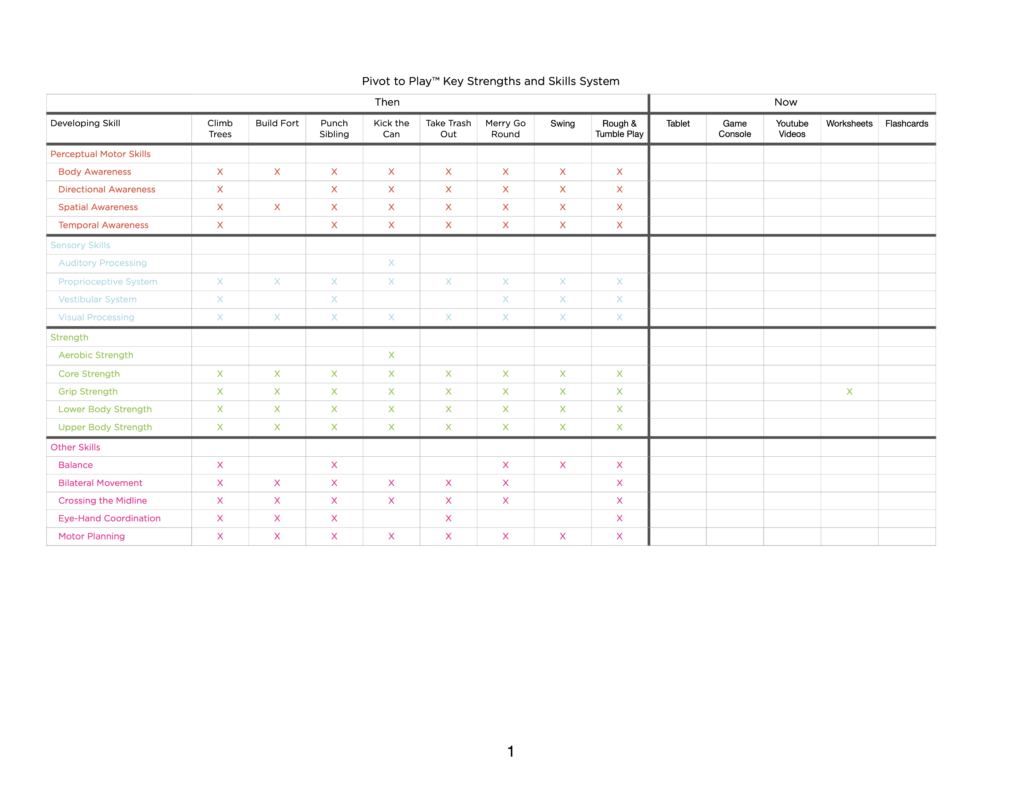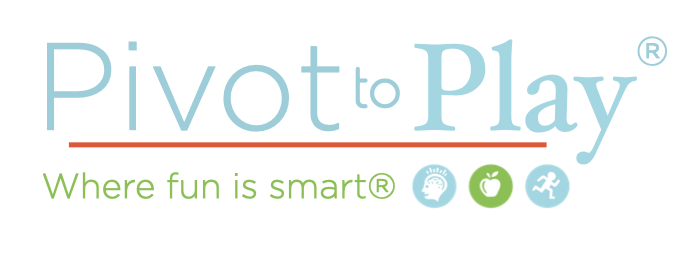Topic 6: Wrap-Up
Now that we have examined all of the strengths and skills, let’s put this all in a big picture and see where kids are today. We know they are under more pressure to perform academically and we know they spend an inordinate amount of time in front of a screen for both school and pleasure. We know they have traded big body play for more sedentary activities. So how does this impact the development of these essential Pivot to Play strengths and skills and ultimately destabilizing the Pivot to Play Learning Pyramid?
Let’s consider what previous generations did in play, work, and free time. We climbed trees, built forts, and played classic games like Kick the Can. At the playground, our swings had really long chains so we could swing extremely high. We had merry-go-rounds and climbing structures on the playground. We had to take the trash out to the curb. We punched our siblings and then rough-housed with them. We didn’t just dabble in these activities occasionally. Instead, these activities were the center of our day, around which everything else revolved.
If we take these activities from the past and put them in the Pivot to Play Strengths and Skills System, we can mark off every single box. Through this big body play we were building our perceptual motor skills, sensory skills, strengths, and necessary other skills that allowed us to behave and attend. We had the strength, endurance, and balance we needed to sit comfortably in a chair to read and write. We had heavy chores that helped us build our proprioceptive system, perceptual motor skills, and general strength.
We were doing what our bodies craved: big body play. And through that play, we were achieving classroom success further up the Pivot to Play Learning Pyramid.
What happens if we put activities that today’s kids do in free time and work time in the Strengths and Skills System? It is a vastly different picture. As a matter of fact, worksheets don’t really build grip strength, but I felt like something should be checked on this side of the chart. Other than that, the system is empty. What too many children do in leisure and work time does nothing to build these crucial skills.
We are doing a disservice to kids when we ask them to sit more than move. It demonstrates clearly why kids have challenges academically and behaviorally. It shows why kids are weaker than they have ever been.
And it shows how movement can change all of that.

To wrap up Level 2 there are more tips and tricks to help you manage kids successfully and build your new business. Though we may have finished looking at the Pivot to Play™ Strengths and Skills, there is a lot more to making fun smart so we will dive more deeply into the Pivot to Play™ Learning Pyramid in Levels 3 and 4, examining everything from mindfulness, the social-emotional impact of play, risk, unstructured play, primitive reflexes and more.
Who knew big body play was so important? We did! And we are going to continue to inspire you to create programs where Fun is Smart™!
